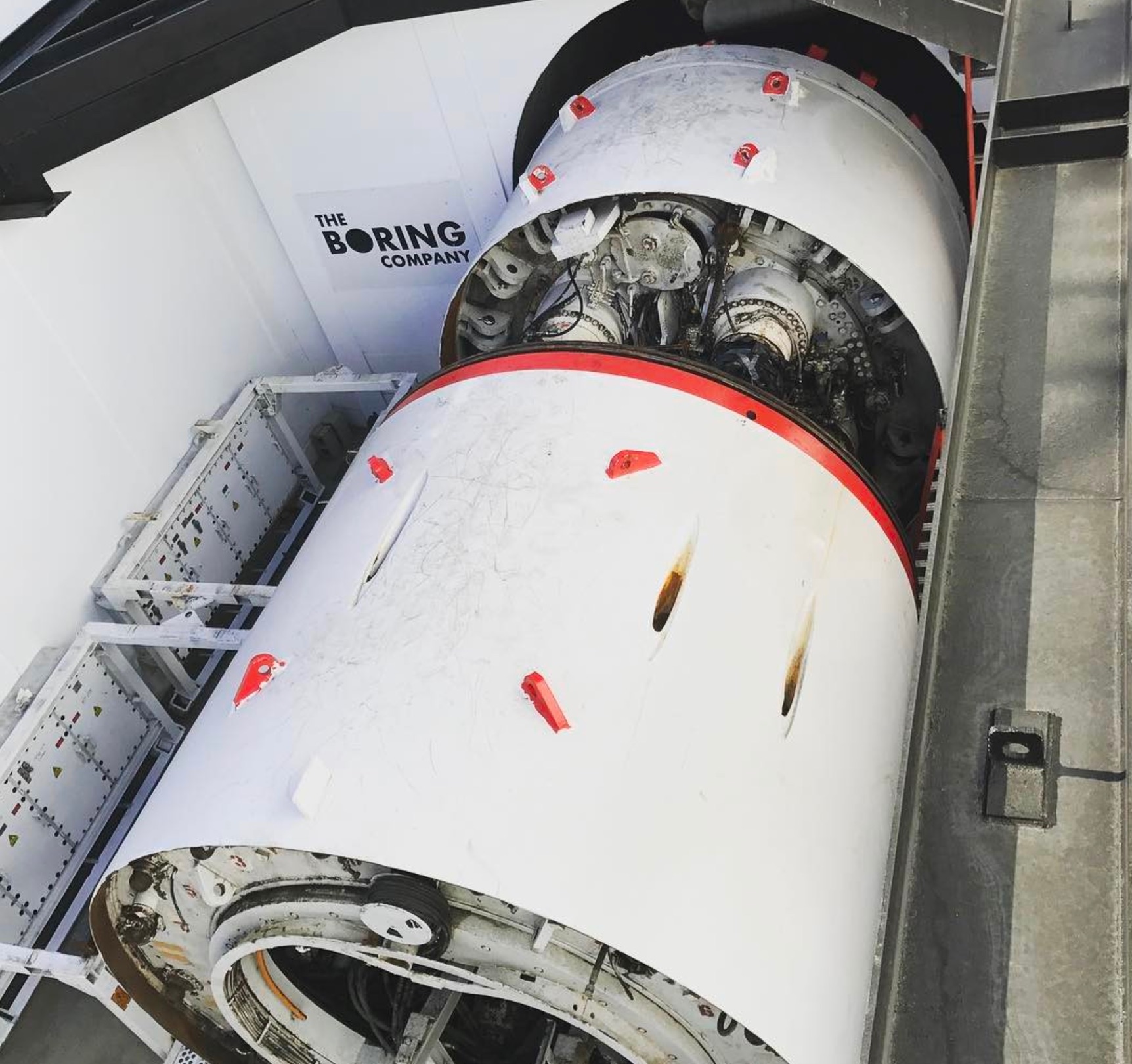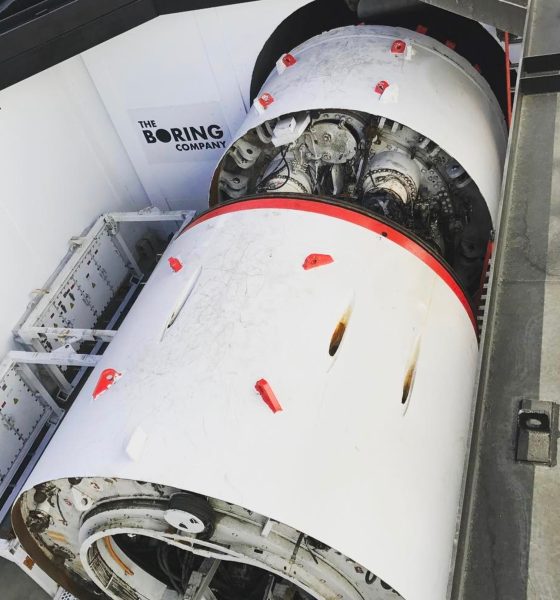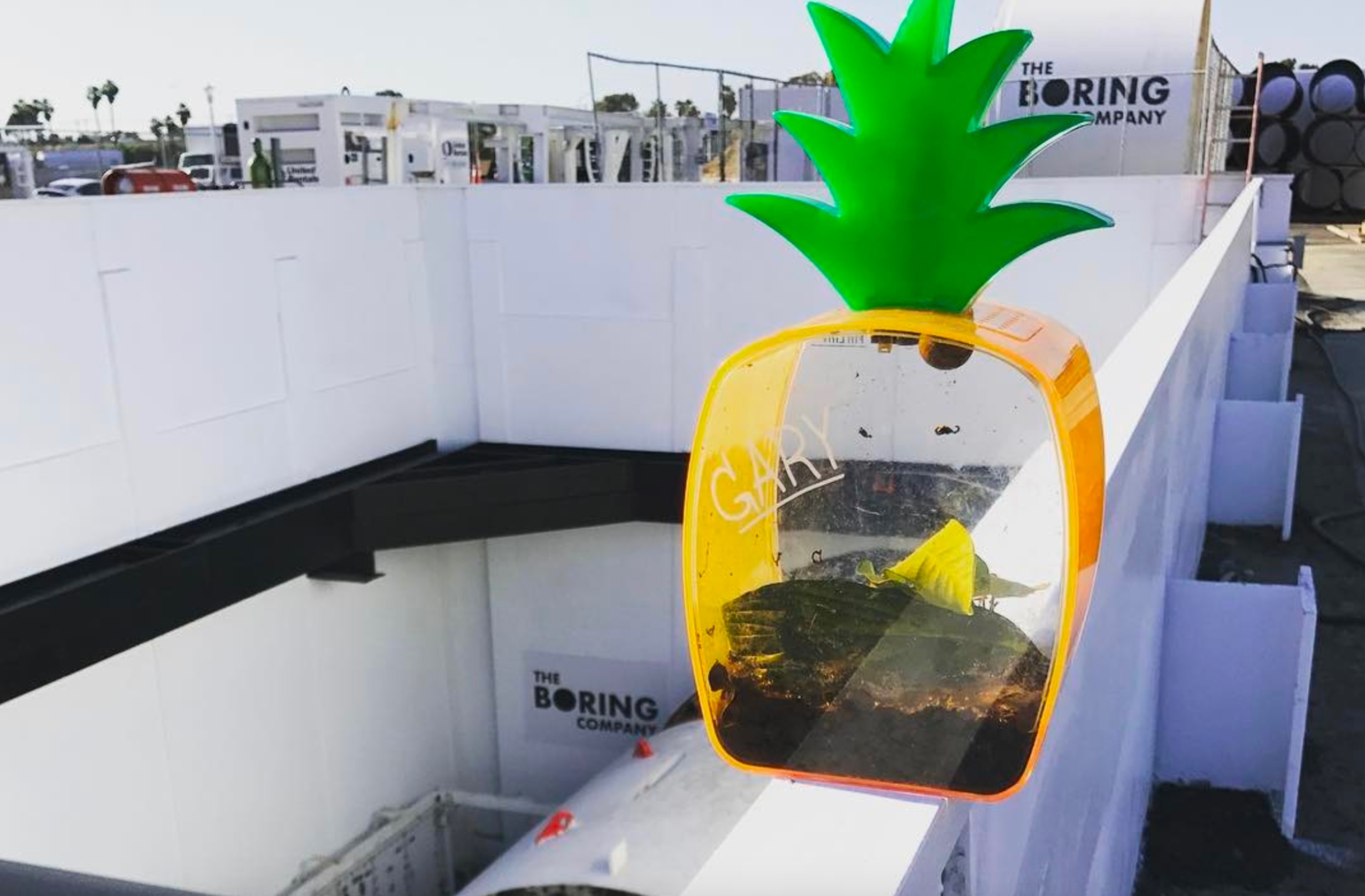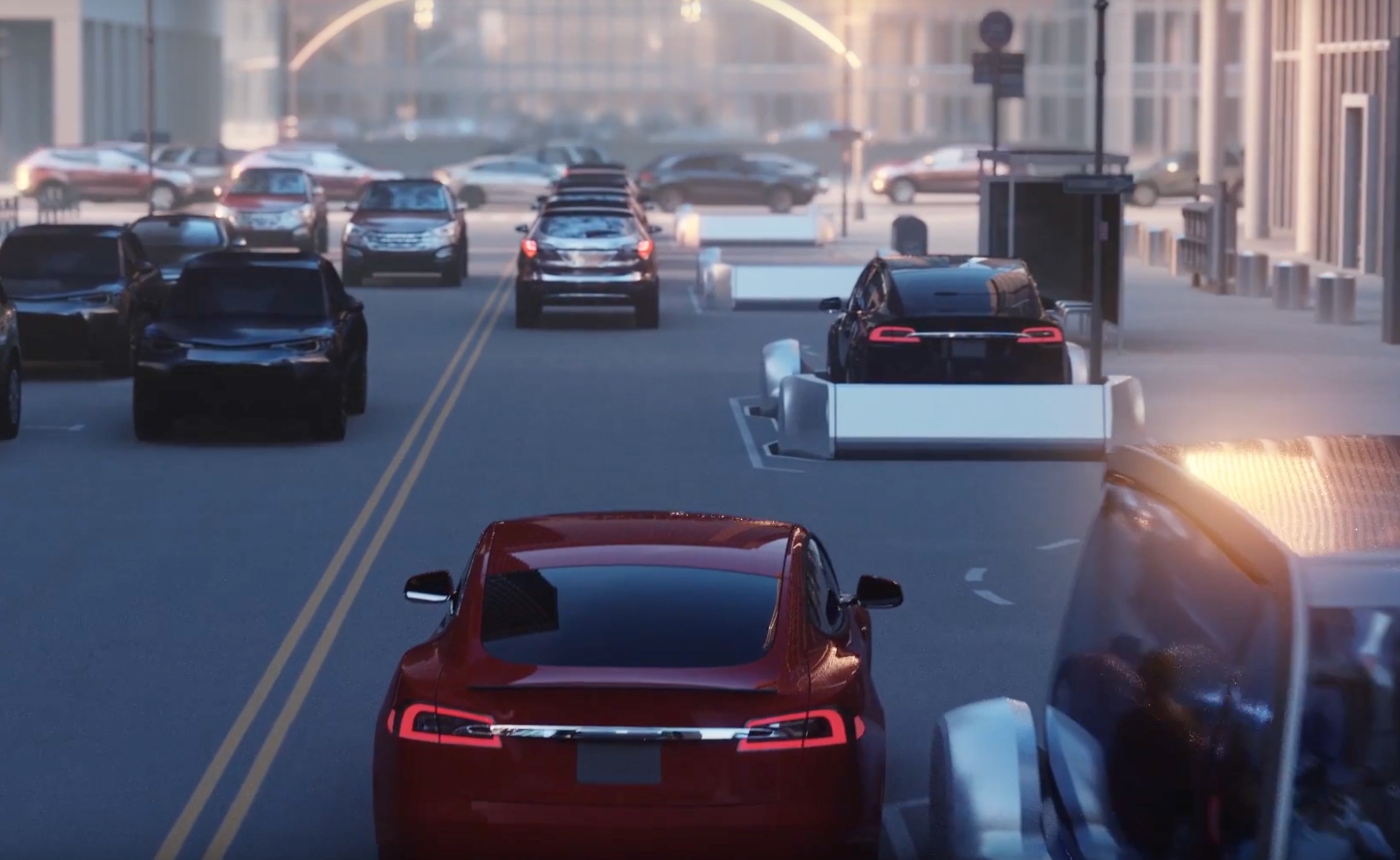

News
Musk’s Boring Co reveals plan to support Hyperloop in published FAQ
Elon Musk’s plan to integrate Tesla electric sleds traveling through underground tunnels dug by The Boring Company will also include support for vacuum-sealed tunnels used by 600+ mph Hyperloop Pods.
The reveal comes from the company’s newly published Frequently Asked Questions page that does away with introductions and cuts straight to the chase.
“A large network of road tunnels many levels deep would fix congestion in any city, no matter how large it grew (just keep adding levels). The key to making this work is increasing tunneling speed and dropping costs by a factor of 10 or more – this is the goal of The Boring Company. Fast to dig, low cost tunnels would also make Hyperloop adoption viable and enable rapid transit across densely populated regions, enabling travel from New York to Washington DC in less than 30 minutes.” reads the FAQ.
The company isn’t even traveling at a snail’s pace, yet it has big plans to do just that – dig tunnels faster than a snail travels. In this case, resident snail Gary (who lives in a pineapple under the sea) can move at 14 times the speed of a Tunnel Boring Machine (TBM) and represents the target speed for the company’s boring machines.
The Framework for Hyperloop
The FAQ sheet broke news that Musk and the team at The Boring Company, in cooperation with Tesla, are planning to build tunnels that can support multi-payloads including that of a Hyperloop Pod. In addition to enabling travel and transport at much higher speeds, this addition is likely to set the Tesla electric sled platform as the standard track that will be used to support mobility of the Hyperloop Pod.
Certain segments of the underground tunnels will have a vacuum shell, if not the entire track, that will allow the tunnel to be held at vacuum. Long distance travel would likely be performed in tunnels held at vacuum, enabling for higher speeds of travel. This format of local versus long distance is the same used by train systems in Europe that have different trains and tracks depending on train speed and distance of travel.
Converts Internal Combustion Vehicles into EVs
Another upside of the system is that it enables the conversion of internal combustion vehicles into zero emission vehicles. When a traditional petroleum powered vehicle is moved onto an electric sled, it will be moved through a system that emits zero emissions. This eliminates the emissions these vehicles would have emitted if they would had ordinarily travelled by road to their destination.
Many people will take Hyperloop Pods to their destinations due to the lower cost of travel. Logistics companies will also shift payload transportation to the tunnel system due to the lower cost as a result of not having a driver, higher speed and automated control over the load. With all of this traffic moving to the conceptual tunnel-based transportation system, it has the potential to radically slash the amount of transportation related emissions and demand for fossil fuels.
If the petroleum industry wasn’t paying attention to Musk and the impact Tesla may have on automotive related fuel consumption, this announcement is surely the wake up call they needed.
Earthquake!
Hollywood thrillers over the years have cast subway systems as the perfect set for apocalyptic thrillers where only a muscular hero armed with backpack full of lithium ion batteries, a stick of bubblegum and the copper from the wiring for the lights can save the day.
The truth, it turns out, is much different. The FAQs relay the facts that structural engineers have know for ages – that properly designed tunnels are one of the safest places to be during an earthquake. The tunnels is not subject to surface forces and instead of resisting the movement of the earthquake, moves with the ground.
Dirty Business
When tunneling in the Minecraft video game, the tunnel materializes and the blocks smashed with a pickaxe or sword simply disappear or move into inventory. The real world is unfortunately not so simple, but The Boring Company has plans to make it just a bit more like Minecraft.
Two major challenges with traditional tunneling are the massive amount of earth being displaced by the tunnel and the equally as challenging amount of concrete that is required to seal the circumference of the tunnel. To solve these challenges together, The Boring Company hopes to develop a process for using the resulting soil to produce earthen bricks. These bricks could even be used as a component of the tunnel lining itself or simply sold as a product.
This is yet another piece of evidence that Tesla truly is attempting to create Minecraft in the real world, reviving the ancient practice of crafting bricks from dirt.
In addition to turning a liability into an asset, this has the potential to drastically cut the amount of concrete used in the production of the tunnels it is constructing. Because of the sheer mass of concrete and the effort required to extract its components, and ship them to the destination, concrete production accounts for a staggering 4.5% of the world’s greenhouse gas emissions. The Boring Company hopes to take a chunk out of those emissions by using bricks where possible in the construction of its tunnels.
Where The Boring Company will go from here is anyone’s guess but this latest update makes it clear that Musk is never willing to settle for the status quo, and always begins working from the ground up – or in this case, from the ground down – when moving into a new business.

News
Tesla China quietly posts Robotaxi-related job listing
Tesla China is currently seeking a Low Voltage Electrical Engineer to work on circuit board design for the company’s autonomous vehicles.

Tesla has posted a new job listing in Shanghai explicitly tied to its Robotaxi program, fueling speculation that the company is preparing to launch its dedicated autonomous ride-hailing service in China.
As noted in the listing, Tesla China is currently seeking a Low Voltage Electrical Engineer to work on circuit board design for the company’s autonomous vehicles.
Robotaxi-specific role
The listing, which was shared on social media platform X by industry watcher @tslaming, suggested that Tesla China is looking to fill the role urgently. The job listing itself specifically mentions that the person hired for the role will be working on the Low Voltage Hardware team, which would design the circuit boards that would serve as the nervous system of the Robotaxi.
Key tasks for the role, as indicated in the job listing, include collaboration with PCB layout, firmware, mechanical, program management, and validation teams, among other responsibilities. The role is based in Shanghai.
China Robotaxi launch
China represents a massive potential market for robotaxis, with its dense urban centers and supportive policies in select cities. Tesla has limited permission to roll out FSD in the country, though despite this, its vehicles have been hailed as among the best in the market when it comes to autonomous features. So far, at least, it appears that China supports Tesla’s FSD and Robotaxi rollout.
This was hinted at in November, when Tesla brought the Cybercab to the 8th China International Import Expo (CIIE) in Shanghai, marking the first time that the autonomous two-seater was brought to the Asia-Pacific region. The vehicle, despite not having a release date in China, received a significant amount of interest among the event’s attendees.
Elon Musk
Elon Musk and Tesla AI Director share insights after empty driver seat Robotaxi rides
The executives’ unoccupied tests hint at the rapid progress of Tesla’s unsupervised Robotaxi efforts.

Tesla CEO Elon Musk and AI Director Ashok Elluswamy celebrated Christmas Eve by sharing personal experiences with Robotaxi vehicles that had no safety monitor or occupant in the driver’s seat. Musk described the system’s “perfect driving” around Austin, while Elluswamy posted video from the back seat, calling it “an amazing experience.”
The executives’ unoccupied tests hint at the rapid progress of Tesla’s unsupervised Robotaxi efforts.
Elon and Ashok’s firsthand Robotaxi insights
Prior to Musk and the Tesla AI Director’s posts, sightings of unmanned Teslas navigating public roads were widely shared on social media. One such vehicle was spotted in Austin, Texas, which Elon Musk acknowleged by stating that “Testing is underway with no occupants in the car.”
Based on his Christmas Eve post, Musk seemed to have tested an unmanned Tesla himself. “A Tesla with no safety monitor in the car and me sitting in the passenger seat took me all around Austin on Sunday with perfect driving,” Musk wrote in his post.
Elluswamy responded with a 2-minute video showing himself in the rear of an unmanned Tesla. The video featured the vehicle’s empty front seats, as well as its smooth handling through real-world traffic. He captioned his video with the words, “It’s an amazing experience!”
Towards Unsupervised operations
During an xAI Hackathon earlier this month, Elon Musk mentioned that Tesla owed be removing Safety Monitors from its Robotaxis in Austin in just three weeks. “Unsupervised is pretty much solved at this point. So there will be Tesla Robotaxis operating in Austin with no one in them. Not even anyone in the passenger seat in about three weeks,” he said. Musk echoed similar estimates at the 2025 Annual Shareholder Meeting and the Q3 2025 earnings call.
Considering the insights that were posted Musk and Elluswamy, it does appear that Tesla is working hard towards operating its Robotaxis with no safety monitors. This is quite impressive considering that the service was launched just earlier this year.
Elon Musk
Starlink passes 9 million active customers just weeks after hitting 8 million
The milestone highlights the accelerating growth of Starlink, which has now been adding over 20,000 new users per day.

SpaceX’s Starlink satellite internet service has continued its rapid global expansion, surpassing 9 million active customers just weeks after crossing the 8 million mark.
The milestone highlights the accelerating growth of Starlink, which has now been adding over 20,000 new users per day.
9 million customers
In a post on X, SpaceX stated that Starlink now serves over 9 million active users across 155 countries, territories, and markets. The company reached 8 million customers in early November, meaning it added roughly 1 million subscribers in under seven weeks, or about 21,275 new users on average per day.
“Starlink is connecting more than 9M active customers with high-speed internet across 155 countries, territories, and many other markets,” Starlink wrote in a post on its official X account. SpaceX President Gwynne Shotwell also celebrated the milestone on X. “A huge thank you to all of our customers and congrats to the Starlink team for such an incredible product,” she wrote.
That growth rate reflects both rising demand for broadband in underserved regions and Starlink’s expanding satellite constellation, which now includes more than 9,000 low-Earth-orbit satellites designed to deliver high-speed, low-latency internet worldwide.
Starlink’s momentum
Starlink’s momentum has been building up. SpaceX reported 4.6 million Starlink customers in December 2024, followed by 7 million by August 2025, and 8 million customers in November. Independent data also suggests Starlink usage is rising sharply, with Cloudflare reporting that global web traffic from Starlink users more than doubled in 2025, as noted in an Insider report.
Starlink’s momentum is increasingly tied to SpaceX’s broader financial outlook. Elon Musk has said the satellite network is “by far” the company’s largest revenue driver, and reports suggest SpaceX may be positioning itself for an initial public offering as soon as next year, with valuations estimated as high as $1.5 trillion. Musk has also suggested in the past that Starlink could have its own IPO in the future.











